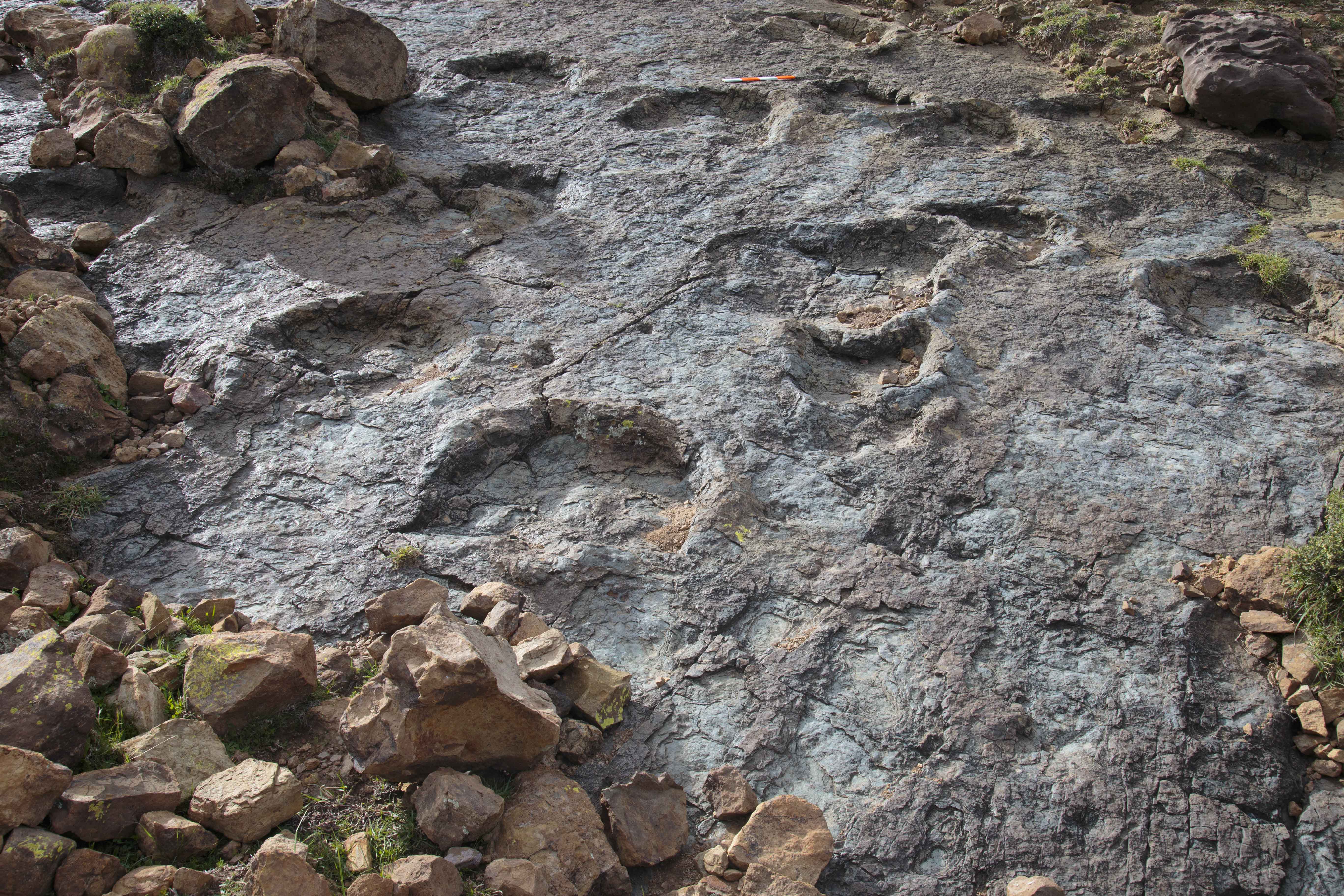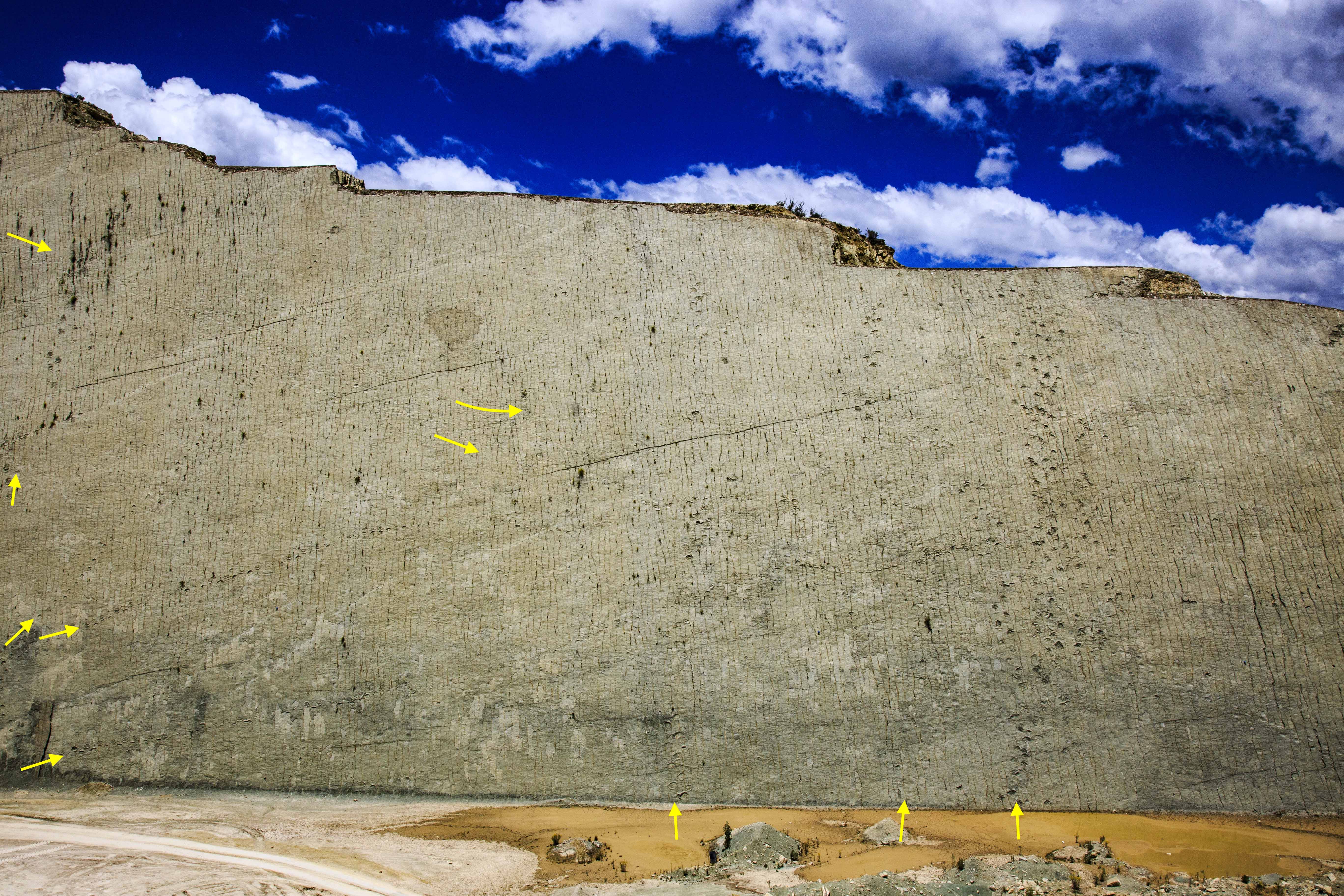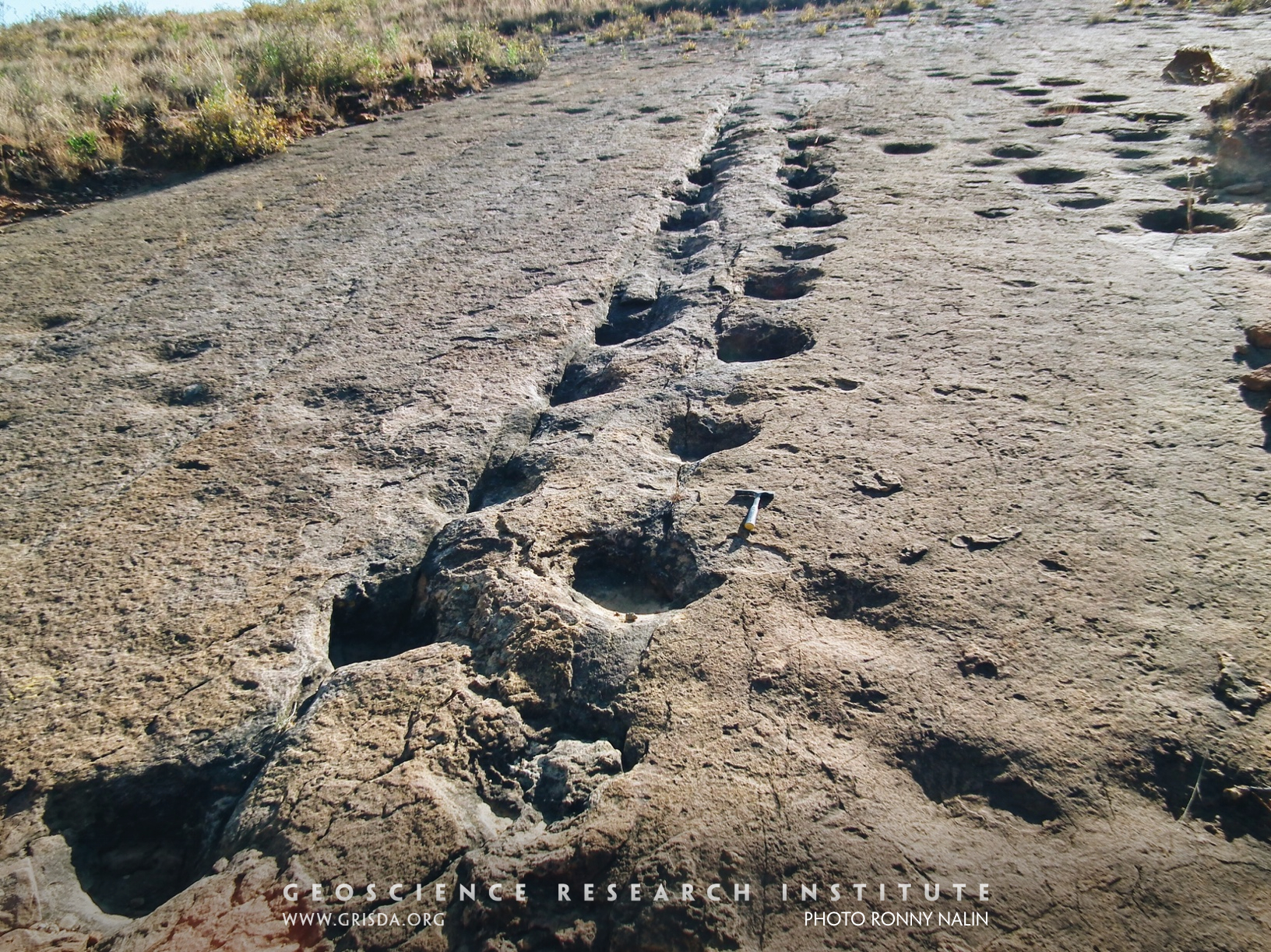©Copyright 2018 GEOSCIENCE RESEARCH INSTITUTE
11060 Campus Street • Loma Linda, California 92350 • 909-558-4548

Torotoro syncline
Dinosaur footprints in the town of Torotoro. Torotoro is located in a valley formed by synclinal folding of sedimentary layers, forming a U-shaped regional structure. In the distance, one of the sides of the syncline can be seen, and the other occupies the bottom part of the photo, where the footprints are exposed
Ankilosaur footprints
Trail of ankilosaur footprints. This track is right at the entrance of the town of Torotoro.
Sauropod trackways
Sauropod dinosaur footprints on the outskirts of the town of Torotoro. The footprints are very well preserved in sandstone rock.
Sauropod footprints
Detail of two sauropod dinosaur footprints. Being quadrupedal, this dinosaur left four impressions, corresponding to two hands and two feet. In the photo, the left footprint corresponds to one hand (front leg), and the right to one foot (rear leg). When walking, the quadrupedal dinosaur first laid down the hand and then the foot, whose footprint partly overlapped with the footprint left by the hand.
Parallel dinosaur trackways
Three trackways of dinosaur footprints. The middle one was made by a bipedal dinosaur, and those on both sides by quadrupedal dinosaurs (sauropods). The rocky substrate consists of sandstones formed on a beach or coast at low tide. The substrate was originally wet and firm, but deformable. The direction of movement of the dinosaurs was to the left.
Dinosaur-tracks
Various sauropod footprints exposed on the surface of a sandstone bed. Scale (red and white) is 40 cm long
Abelisaurus footprint
This footprint is the largest Abelisaurus footprint found to date. It is located near the Maragua syncline. The scale is 40 cm long.
Cal Orcko dino trackways
Site of dinosaur footprints of Cal Orcko, in Sucre, where more than twelve thousand prints have been found on numerous trackways in this wall of limestone and sandstone inclined at about 70 degrees, 1200 m long, and 80 m high. Researchers have found almost 300 ichno species on this exposure.
Dinosaur trackways
Dinosaur trackways, the main one thought to have been left by an ankylosaurid (hammer for scale). Cretaceous El Molino Fm., Torotoro, Bolivia. Well developed fossil trackways imply a special set of conditions, with sediment wet enough for footprints to remain impressed followed by prompt induration and burial.
Carnosaur trackway
Walking on mudcracks. A dinosaur left this track in muddy sediment that shrank, forming polygons upon desiccation. Trackway exposed in Cretaceous layers from the Sousa Basin of Brazil, at the Vales Dos Dinossauros geosite.
Underprints
“Brontosaur bulges." Mid-way through the picture we can observe four bulges in a sandstone layer, depressing downward the underlying layers. These have been interpreted as a dinosaur trackway viewed in cross-section. A large sauropod left these “underprints" by deforming soft sediment while walking. Very specific conditions (e.g, sediment cohesiveness, rate of sedimentation, exposure vs submergence) are necessary for the preservation of footprints in the rock record. Scale bar is 40 cm long. Photo taken at Dinosaur Ridge, Golden, Colorado.
DinoRdgTracks
Dinosaur trackways, west Denver --- Dinosaur Ridge with trackways in the Dakota sandstone.











